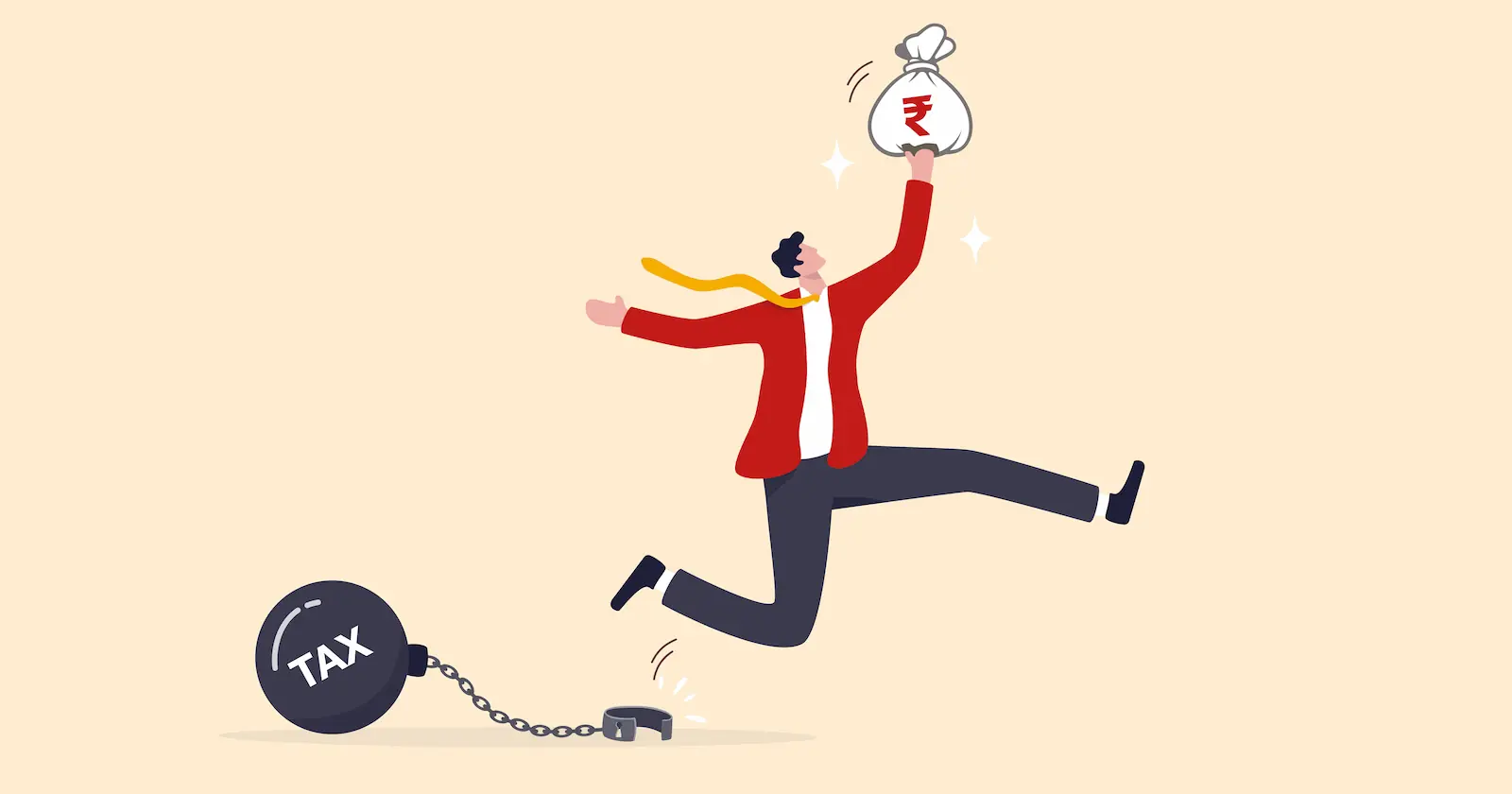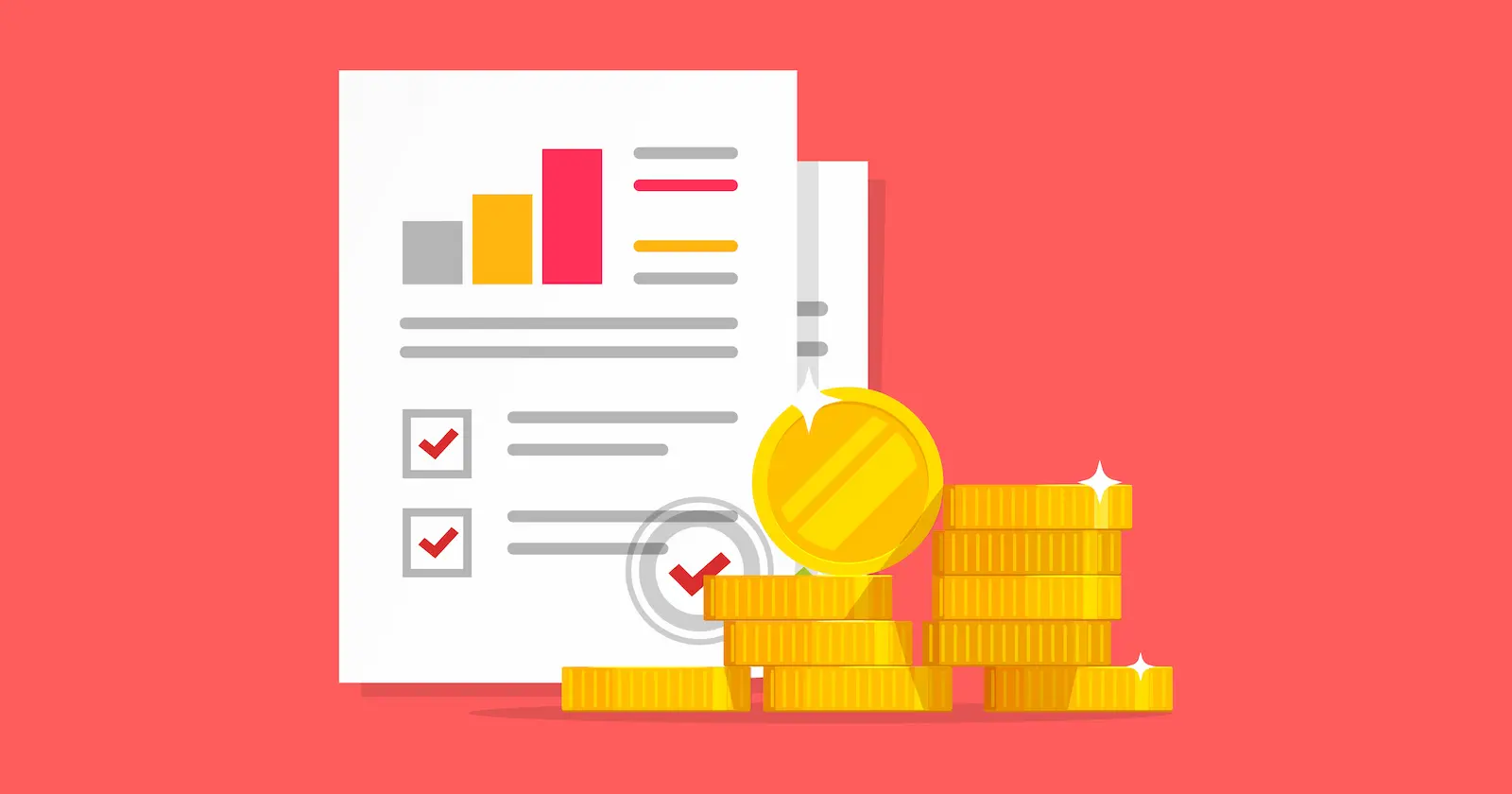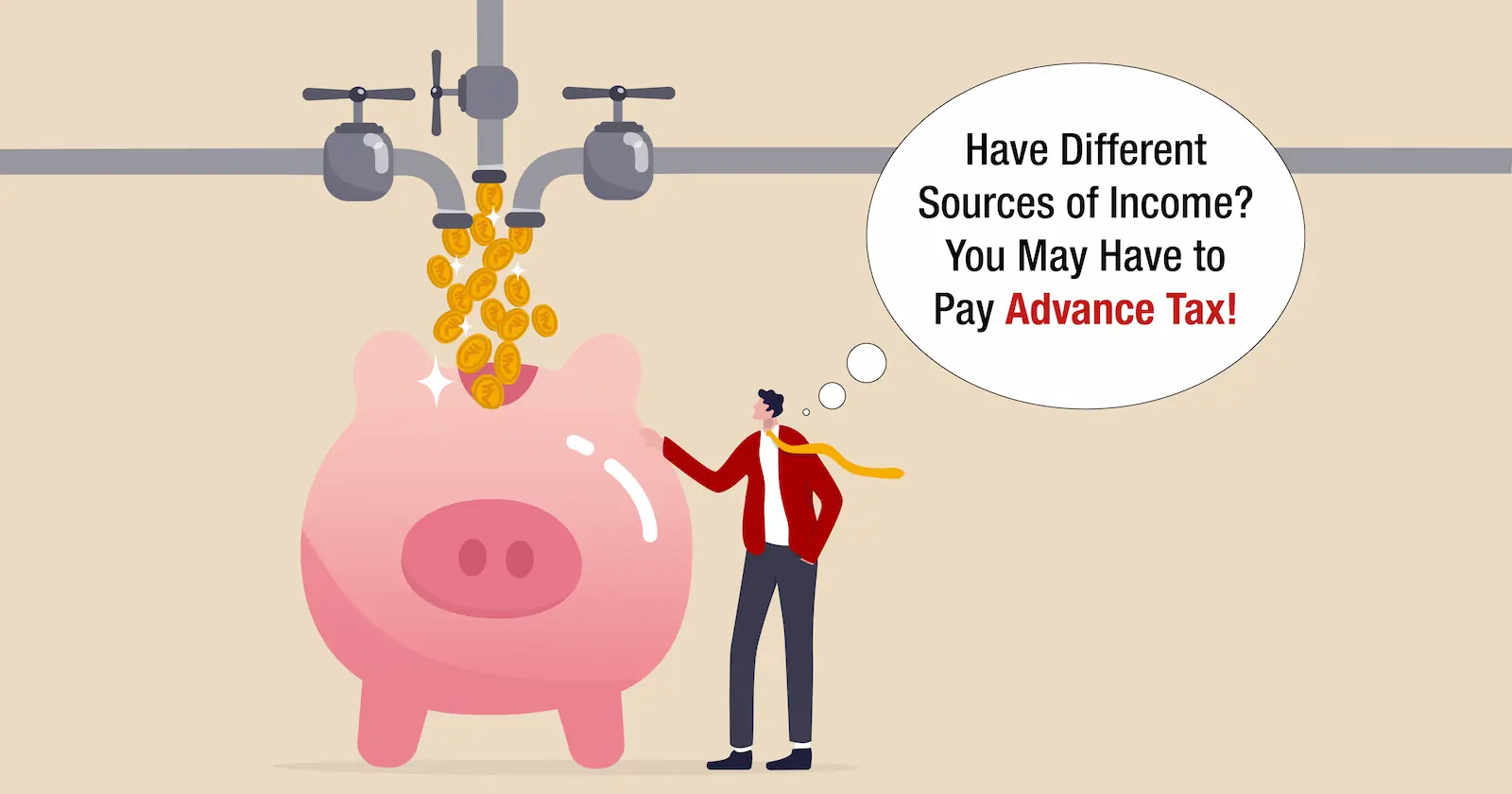Every person with taxable income in India makes every effort to minimise their tax bill. He or she seeks to take advantage of the numerous deductions allowed by Sections 80C to 80U of the Income Tax Act of 1961. Thankfully, there are now a variety of tax-free incomes and investments available in India.
Let us understand top 15 tax free income sources in India that are exempted from tax under the Income Tax Act, 1961.
Tax Free Incomes in India
Here’s a list of tax-free incomes in India.
1. Money Received from Insurance
Any sum of money received under a Keyman Insurance Policy (KIP), a Life Insurance Policy (LIP), or an insurance policy where the premium payable for any year during the policy's term is more than 10% of the actual capital sum assured, are all completely exempt from taxes.
Premium paid in respect of Life Insurance policy
Any sum received under a life insurance policy, including the sum allocated by way of bonus on such policy shall not be included in the total income of a person u/s 10(10d).
The following is a tabular summary of the exemption available under section10(10D) and deduction allowable under section 80C vis-à-vis the date of issue of such policies :
| Exemption u/s10 (10D) | Deduction u/s 80C | |
|---|---|---|
|
In respect of policies issued before 01.04.2003 |
Any sum received under a LIP including the sum allocated by way of bonus is exempt. |
Premium paid to the extent of 20% of “actual capital sum assured”. |
|
In respect of policies issued between 01.04.2003 and 31.3.2012 |
Any sum received under a LIP including the sum allocated by way of bonus is exempt. However, exemption would not be available if the premium payable for any of the years during the term of the policy exceeds 20% of “actual capital sum assured”. |
Premium paid to the extent of 20% of “actual capital sum assured”. |
|
In respect of policies issued on or after 01.04.2012 but before 01.04.2013 |
Any sum received under a LIP including the sum allocated by way of bonus is exempt. However, exemption would not be available if the premium payable for any of the years during the term of the policy exceeds 10% of actual capital sum assured. |
Premium paid to the extent of 10% of “actual capital sum assured”. |
|
In respect of policies issued on or after 01.04.2013 |
Any sum received under a LIP including the sum allocated by way of bonus is exempt. However, exemption would not be available if the premium payable for any of the years during the term of the policy exceeds 15% of “actual capital sum assured” i.e., “minimum capital sum assured” under the policy on the happening of the insured event at any time during the term of the policy |
Premium paid to the extent of 15% of “actual capital sum assured”. |
2. Agricultural Income
Agricultural income is completely free from income tax under Section 10(1) of the Income Tax Act. An agricultural income that is greater than Rs. 5000, however, is added to the overall income for both individuals and HUFs. The addition is only made in order to determine the slab rate which will apply to the taxpayer's other income. In this scenario, income from sources else than agriculture is referred to as "other income." As a result, agricultural income is not taxed, but declaring it does raise the total income tax rate.
Please note that agricultural income refers to:
- The production, processing, and distribution of agricultural products like wheat, rice, pulses, fruits, vegetables, spices, etc.
- Rent received from properties used for agriculture.
- The income generated by the sale or buying of agricultural land.
Partial integration of agricultural income with non-agricultural income
As in the above discussion we have seen that agricultural income is exempt subject to conditions mentioned in definition clause of section 2(1A). However, a method has been laid down to levy tax on agricultural income in an indirect way. This concept is known as partial integration of agricultural income with non-agricultural income. It is applicable to individuals, HUF, AOPs, BOIs and artificial juridical persons. Two conditions which need to be satisfied for partial integration are:
- The net agricultural income should exceed`5,000 p.a.,and
- Non-agricultural income should exceed the maximum amount not chargeable to tax. (i.e., `5,00,000 for resident very senior citizens, 3,00,000 for resident senior citizens,`2,50,000 for all others).
Tax Calculation :
Step 1: Add non-agricultural income with net agricultural income. Compute tax on the aggregate amount
Step 2: Add net agricultural income and the maximum exemption limit available to the assessee (i.e., 2,50,000/ 3,00,000/ 5,00,000). Compute tax on the aggregate amount.
Step 3: Deduct the amount of income tax calculated in step2 from the income tax calculated in step1 i.e., Step1–Step2.
Step 4: The sum so arrived at shall be increased by surcharge, if applicable. It would be reduced by the rebate (if any) available u/s 87A.
Step 5: Thereafter, it would be increased by health and education cess@ 4%
3. Various components of salary received from the employer
Any monetary benefit offered by the employer to its employees for meeting expenditures, over and above the basic salary are known as Salary Allowances.
According to Income Tax Act, 1961, allowances are added to the salary of an individual and taxed under the head Income from Salaries. The salary allowances can be divided into three categories, taxable, non-taxable and partly taxable allowances.
As per the Income Tax Act, allowances are broadly divided into three categories
- Taxable Allowance
Taxable allowances are those allowances which are part of salary and are not exempted under any section of Income Tax Act. These are taxed as per the tax slab of the employee. Here are few commonly known taxable allowances:
- Dearness Allowance: Dearness Allowance is mostly paid to employees over the basic salary to manage inflation and as an adjustment towards the cost of living expenses. The income tax act clearly mentions that tax liability for Dearness Allowance will be calculated along with salary. Therefore, one must declare the same while filing income tax returns.
- Entertainment Allowance: This allowance is given to employees to meet the expenses towards hospitality in receiving customers etc. The Act gives a deduction towards entertainment allowance only to a Government employee and in case of non-government employees entertainment allowance is completely taxable.
Entertainment allowance received is fully taxable and is first to be included in the salary and thereafter the following deduction is to be made from gross salary:
The amount of deduction will be lower of:
- One-fifth of his basic salary or
- 5,000 or
- Entertainment allowance received.
Amount actually spent by the employee towards entertainment out of the entertainment allowance received by him is not a relevant consideration at all.
- Medical Allowance: This allowance is paid for the medical expenses incurred by the employee. this allowance is fully taxable.
- Overtime Allowance - Employees who work beyond their regular shifts may receive an overtime payment from their employers. This is referred to as overtime and any compensation received is fully taxable.
- City Compensatory Allowance - This payment is made to employees who work in urban areas that may be quite expensive in order to help them cope with the excessive expense of living there. It is taxable irrespective of the fact whether it is given as compensation for performing his duties in a particular place or under special
- Interim Allowance - Any interim allowance given by an employer in place of a final allowance is completely taxed.
- Project Allowance - When an employer pays an employee's project-related expenses out of an allowance, that income is completely taxable.
- Tiffin/Meals Allowance- When employer pays for employee’s tiffin/meals that is entirely taxable.
- Cash Allowance - When an employer offers a cash allowance, such as one for a wedding, a funeral, or a holiday, it is fully taxable.
- Non-Practicing Allowance – this allowance is given to doctors who provides their employer a certificate that they are not working in any self practice. This allowance is generally 20% of basic salary and dearness allowance.
- Warden Allowance - When an employer provides a stipend to a worker serving as a Warden, or Keeper, at a school, the stipend is completely taxable.
- Servant Allowance - When an employer pays a worker to use a servant's services, that allowance is considered as taxable income.
- Transport allowance - Transport allowance granted to an employee to meet his expenditure for the purpose of commuting between the place of his residence and the place of his duty is fully However,in case of blind/ deaf and dumb/ orthopedically handicapped employees exemption upto 3,200 p.m. is provided under section 10(14).
- Other Taxable allowances - Telephone Allowance, Holiday allowance, and so on.
- Non-Taxable Allowance
These allowances are part of the salary, however, are fully exempt from tax, which means while computing tax these are deducted from the salary. Here are few commonly known fully exempted allowances:
- Uniform Allowance: Any allowance granted to meet the expenditure on the purchase or maintenance of uniform for wear during the performance of the duties of an office or employment of This is exempted to the limit of the actual amount spent on the expenses.
- Allowances Paid to Government Employees Abroad - Allowances or perquisites paid or allowed as such outside India by the Government to a citizen of India for services rendered outside India are exempt from tax
- Allowances Paid to UNO Employees - Allowance paid by the UNO to its employees is not taxable by virtue of section 2 of the United Nations (Privileges and Immunities) Act,
- Allowances Judges of the High Court and Supreme Court - Any allowance paid to a Judge of a High Court and Supreme Court is not taxable.
- Compensatory Allowances - Compensatory allowance received by judge under Article 222(2) of the Constitution is not taxable since it is neither salary not
- Sumptuary allowance- Sumptuary allowance given to High Court Judges under section 22C of the High Court Judges Act, 1954 is not chargeable to tax.
- Helper Allowance - Helper Allowance is the allowance granted to an employee to meet the expenditure incurred on a helper when such helper is engaged for performing official duty.
- Other Tax Free Allowances – Daily Allowance, Academic / Research Allowance, Conveyance allowance, Allowances paid to government employee posted outside India, Compensatory Allowances paid to Judges, and Travelling Allowance, and so on.
- Partially Taxable Allowances
These allowances are exempt from tax to a certain limit as instructed in the income tax act. Here are few commonly known partially taxable allowances:
- House Rent Allowance - HRA is a special allowance specifically granted to an employee by his employer towards payment of rent for residence of the As per the Sec 10 (13A), the least of the following is exempted, and rest amount is taxable.
- Actual HRA received
- Rent Paid – 10% (Basic salary + DA)
- 40% of salary ( basic + DA) and 50% in metro cities like Mumbai, Kolkata, Delhi, or Chennai) Exemption is not available to an assessee who lives in his own house, or in a house for which he has not incurred the expenditure of rent.
- Children Education Allowance - This allowance is granted towards the expenses incurred on a child’s education. This is exempted up to Rs. 100 per month per child up to a maximum of 2 children.
- Hostel Expenditure Allowance - This allowance is granted to employees for the expenses incurred on the hostel fees of their child. This is exempted up to Rs. 300 per month per child up to a maximum of 2 children.
- Transport allowance - Any transport allowance granted to an employee who is blind or deaf and dumb or orthopedically handicapped with disability of the lower extremities of the body, to meet his expenditure for commuting between his residence and place of duty is exempt upto rs 3200 per month.
- Allowance given to an employee in the transportation industry - Allowance given to an employee in the transportation industry to cover personal expenses while performing duties related to the operation of such transportation from one location to another, if the employee is not receiving the daily allowance.
Amount of exemption shall be lower of following:
70% of such allowance; or
Rs 10,000 per month.
- Special Allowance - Special Allowance is a allowance granted to the Employees to meet certain expenses. The expenses must be incurred against which such allowance is given to the employee.
- Underground Allowance- This allowance is granted to an employee who is working in uncongenial, unnatural climate in underground mines is exempt upto 800 per month.
- Conveyance Allowance Exemption Limit - Conveyance allowance refers to the compensation provided by the employer to the employee for travelling to and from the workplace. Taxes are not due on the allowance up to a monthly cap of INR 1600. According to the Income Tax Act, taxes will be due on any sums received in excess of INR 1600.
However, with the amendment coming in Budget 2018, tax exemption on conveyance/transport allowance has been replaced and included in the Standard Deduction allowed. Therefore, no separate exemption will be allowed for conveyance/transport allowance from FY 2018-19 onwards.
- Leave Travel Allowance- You are eligible to claim exemption for LTA if you are going on a vacation subject to exemption limit as specified under the Income Tax Act, 1961. This exemption applies to the employee's when the journey is performed by rail, aircraft, or bus. The exemption is as below
- 1) If travel by Air : Maximum exemption shall be economy fare calculated by the airlines considering shortest route to the Destination.2) Where place of origin and destination is connected by Railways and the Journey is performed between such places : Maximum exemption shall be not more than air-conditioned first class rail fare by the shortest route.
- 3) Where place of origin and destination is not connected by Railways : In case recognized public transport exist, maximum exemption will be of amount not exceeding first class fare of such transport by shortest route. In case recognized public transport does not exist, amount equal to air conditioned first class rail fare.
- This exemption does not apply to any additional local transportation, sightseeing, hotel accommodations, meals, or other expenses. The lower of the two exemptions will be allowed:
- The employer provides LTA.
- Exemption based on expenses incurred or the applicable amounts subject to the conditions covered above for each method of transportation.
- Medical Allowance - Medical allowance is a part of the salary, exactly like dearness allowance. It is totally taxed.
Medical reimbursement is a refund of the employee's or his family's medical expenses. The exemption amount will be the lesser of the two;
However, with the amendment coming in Budget 2018, tax exemption on medical reimbursement has been replaced and included in the Standard Deduction allowed. Therefore, no separate exemption will be allowed for Medical Reimbursement from FY 2018-19 onwards.
- Car maintenance allowance - If an employee uses a company's car and the company repays the driver's wage, insurance, maintenance, and fuel expenses, the taxable value is Rs 2,700 per month (cars with cubic capacity within 1.6 Litre) or Rs 3,300 per month (cars with engines over 1,600 cc) (car with cubic capacity exceeding 1.6 Litre).
An exemption of Rs 2,700 per month or Rs 3,300 per month in respect of the driver salary, maintenance, and fuel expenditures paid and refunded by the employer if the employee owns the car.
- House Rent Allowance - HRA is a special allowance specifically granted to an employee by his employer towards payment of rent for residence of the As per the Sec 10 (13A), the least of the following is exempted, and rest amount is taxable.
4. Receipts from Hindu Undivided Family
An individual who is a member of a HUF is not required to pay income tax on any receipts they receive. The HUF, however, ought to have received a separate income tax assessment and payment.
5. Share from a Partnership Firm or LLP
If an individual is a partner of a firm, the profit shares the person owns in the total firm, income is exempted from income tax, under Section 10(2). Other sources of income that the partner of a LLP or partnership firm receives, (other than profit share), including interest or remuneration are taxable.
6. Gratuity
Its treatment is discussed below:
- Retirement gratuity received under the Pension Code or Regulations applicable to members of the Defence Service is fully exempt from
- Employees of Central Government/ Members of Civil Services/ local authority employees: Any death cum retirement gratuity is fully exempt from tax under section 10(10)(i).
- Other employees:
- Covered by the Payment of Gratuity Act, 1972
Any death-cum-retirement gratuity is exempt from tax to the extent of least of the following:
- 20,00,000
- Gratuity actually received
- 15 days’ salary based on last drawn salary for each completed year of service or part thereof in excess of 6 months
Note: Salary for this purpose means basic salary and dearness allowance. No. of days in a month for this purpose, shall be taken as 26.
- Not covered by the Payment of Gratuity Act, 1972
Any death cum retirement gratuity received by an employee on his retirement or his becoming incapacitated prior to such retirement or on his termination or any gratuity received by his widow, children or dependents on his death is exempt from tax to the extent of least of the following:
- 20,00,000
- Gratuity actually received
- Half month’s salary (based on last 10 months’ average salary immediately preceding the month of retirement or death) for each completed year of service
- Covered by the Payment of Gratuity Act, 1972





Comments